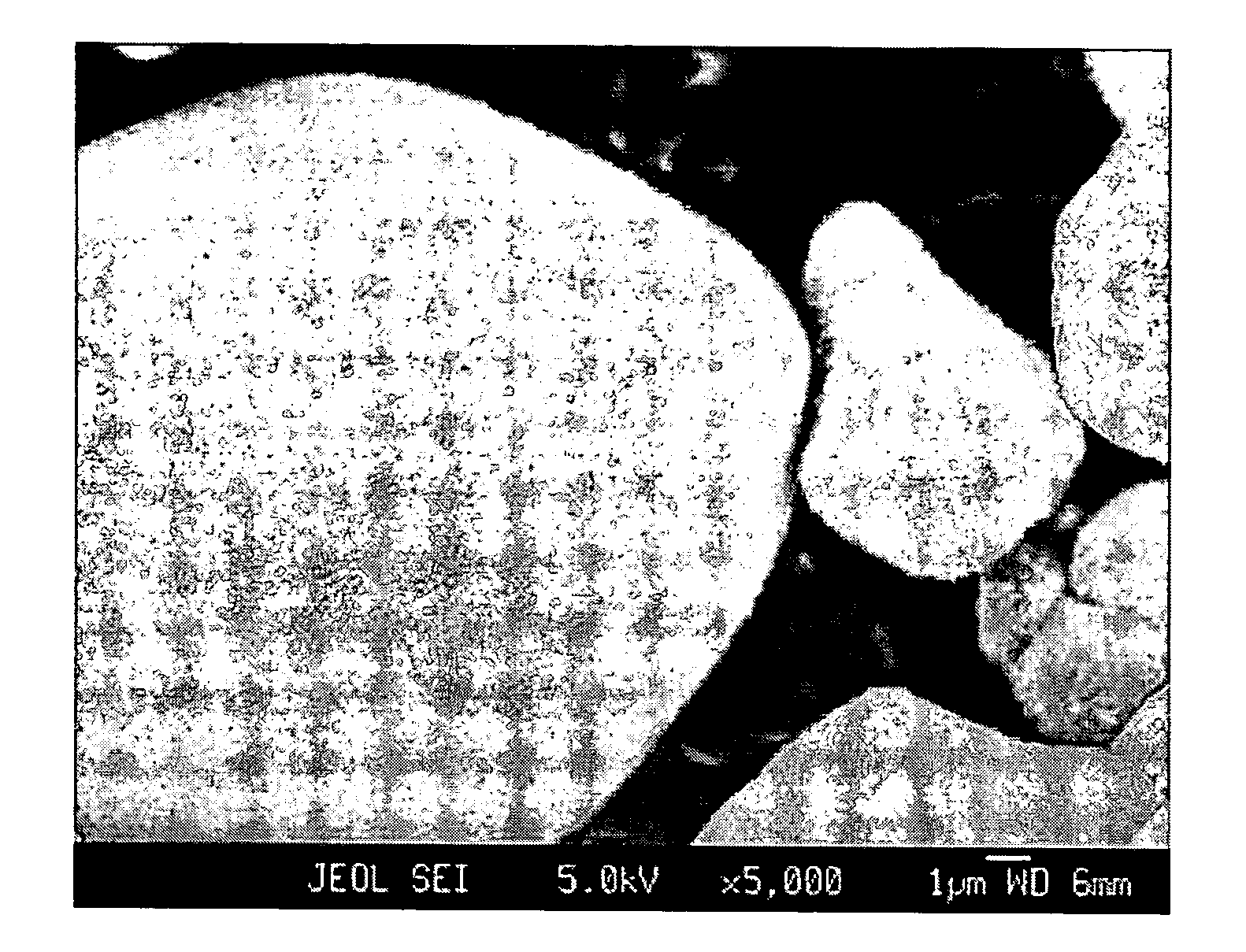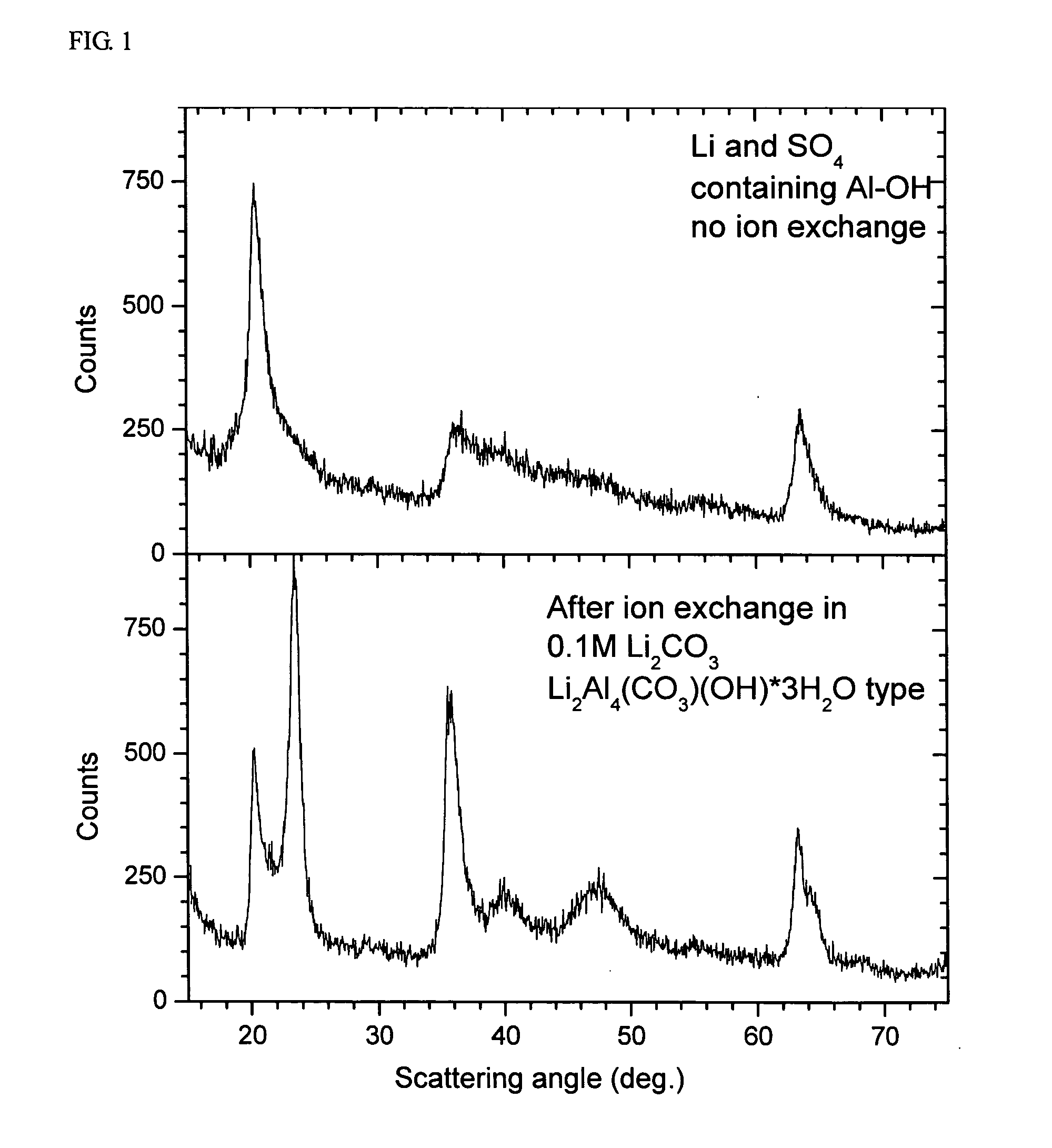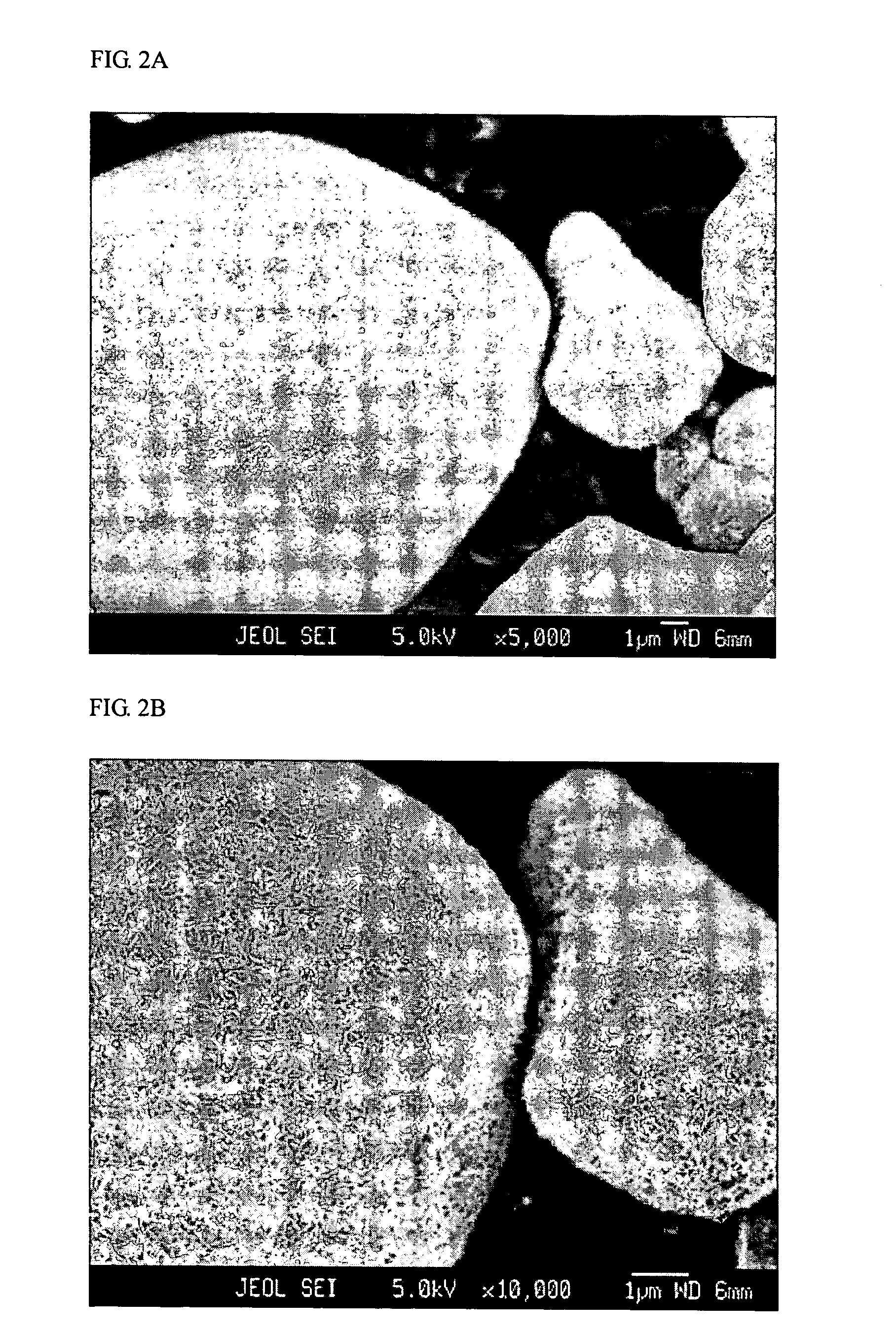Composite precursor for aluminum-containing lithium transition metal oxide and process for preparation of the same
a lithium transition metal oxide and precursor technology, applied in the field of composite precursors for aluminumcontaining lithium transition metal oxide and a, can solve the problems of difficult or impossible preparation by simple solid state reaction, difficult or impossible removal of sulfur, and high cos
- Summary
- Abstract
- Description
- Claims
- Application Information
AI Technical Summary
Benefits of technology
Problems solved by technology
Method used
Image
Examples
example 1
[0050] In the present example, the precipitate of aluminum salt and base salt was investigated. A flow of 1.33 M Al2(SO4)3 solution and a flow of 4 M LiOH solution were continuously fed at a constant rate to a reactor containing 200 ml of H2O during agitation. The temperature was 60° C. and pH was 9.0 when measured at 40° C. The total amount of aluminum was 0.05 mol. The precipitate was washed by decanting, filtered and dried at 60° C. in dynamic vacuum. The chemical analysis on the decanted and filtered solution surprisingly showed that no aluminum remained in the solution.
[0051] The precipitate was investigated by ICP for the contents of Al and Li and by X-ray to investigate the crystal structure. The content of sulfur was estimated by EDS. The result showed that the precipitate is basically of aluminum hydroxide, additionally containing lithium and sulfur. The composition of Al, Li and S is approximately Al0.7Li0.3(SO4)0.2. The X-ray diffraction pattern is disclosed in FIG. 1. T...
example 2
[0053] A commercial lithium manganese spinel (Mitsui) was used as seed particles. A slurry was prepared by adding 300 ml of H2O to 250 g of lithium manganese spinel. A flow of 1.33 M Al2(SO4)3 solution and a flow of 4 M LiOH solution were continuously fed at a constant rate to a reactor containing the slurry. The temperature was 80° C. and pH was 9.9 when measured at 50° C. 2.5 atom % Al was precipitated per 1 Mn in spinel.
[0054] The surface structure of the spinel obtained after washing and drying was investigated in the same manner as in Example 1 to confirm that the surface of the spinel is covered by an aluminum hydroxide-based precipitate. EDS investigation showed that the precipitate contained approximately 25% by atoms of sulfur relative to precipitated Al.
example 3
[0055] LiCoO2 having the monolithic particle morphology was used as seed particles, and a slurry containing 2 kg of LiCoO2 in 1 L of water was prepared. About 200 ml of the slurry was fed to a reactor. A flow of 1.33 M Al2(SO4)3 solution and a flow of 4 M LiOH solution were continuously fed to the reactor at a constant rate. 2% by atoms of Al were precipitated relative to Co.
[0056] In addition, several preparations were carried out under various reaction conditions, i.e., temperatures varying from 20 to 90° C., pH varying from about 8 to 11, varying flow rates, etc., so that the precipitation reaction was finished after 4, 10 or 20 minutes. In some preparations, 1 mol of Li2SO4 per liter water was initially added to the slurry.
[0057] The experiments showed that in all cases, a homogeneous layer of Al-hydroxide-based precipitate, more specifically lithium-aluminum-sulfate-hydroxide-hydrate, fully covering the LiCoO2 surface was formed. The FESEM micrographs showing such coated part...
PUM
| Property | Measurement | Unit |
|---|---|---|
| temperature | aaaaa | aaaaa |
| temperature | aaaaa | aaaaa |
| temperature | aaaaa | aaaaa |
Abstract
Description
Claims
Application Information
 Login to View More
Login to View More - R&D
- Intellectual Property
- Life Sciences
- Materials
- Tech Scout
- Unparalleled Data Quality
- Higher Quality Content
- 60% Fewer Hallucinations
Browse by: Latest US Patents, China's latest patents, Technical Efficacy Thesaurus, Application Domain, Technology Topic, Popular Technical Reports.
© 2025 PatSnap. All rights reserved.Legal|Privacy policy|Modern Slavery Act Transparency Statement|Sitemap|About US| Contact US: help@patsnap.com



